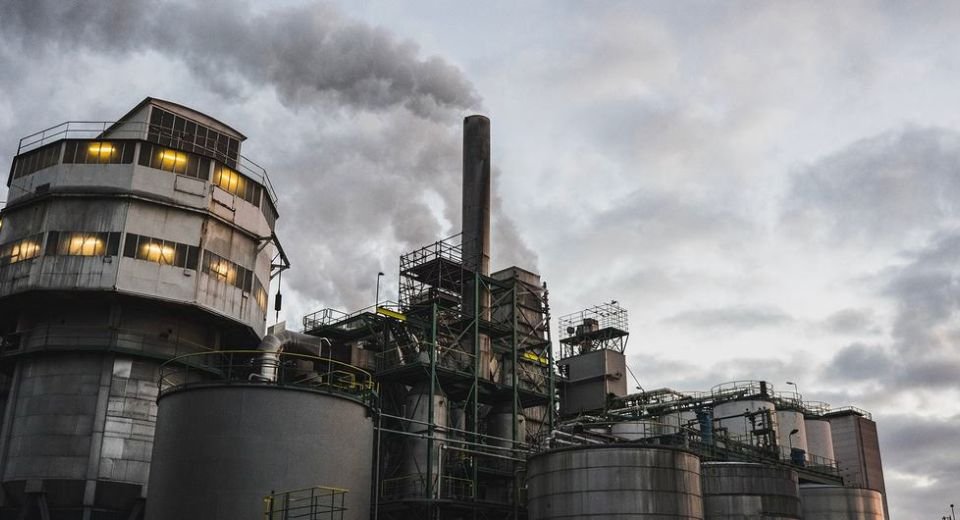HQ Team
October 29, 2024: Exiting plans to combat climate change “fall miles short” of what’s needed to stop global heating from destroying every economy and wrecking billions of lives and livelihoods across every nation, a UN climate official said.
Simon Stiell, the Executive Secretary of the United Nations Framework Convention on Climate Change (UNFCCC), said the current levels of pollution would “guarantee a human and economic train wreck for every country, without exception.”
Stiell’s comments come after the UNFCCC unveiled its 2024 Nationally Determined Contributions (NDC) Synthesis Report which delved into proposed actions by countries to mitigate the impacts of climate change.
The report showed that current plans would result in emissions of 51.5 gigatonnes of carbon dioxide (CO2) equivalent by 2030 – just 2.6 per cent below 2019 levels.
As nations start preparing for the UN climate change conference (COP29) in Baku next month, the UNFCCC urged governments to convert pledges into “real world, real economy results.”
Transitioning away from fossil fuels
At COP28, which was hosted by the United Arab Emirates, delegations had committed to tripling renewables, advancing the global goal of adaptation and transitioning away from all fossil fuels.
COP29 must deliver concrete and ambitious outcomes on climate finance, Stiell said.
The report also showed that the current trajectory falls far short of scientific requirements.
The Intergovernmental Panel on Climate Change (IPCC) – a UN scientific body assessing climate change and providing governments with scientific information to develop climate policies – noted that emissions need to be cut by 43% compared to 2019 levels.
Looking ahead to next year’s updated commitments Stiell said: “They must have ambitious new emissions targets that are economy-wide…they must be broken down into sectors and gases…and they must be credible, backed up by substantive regulations, laws and funding.”
The 2024 NDC report “must be a turning point, ending the era of inadequacy and sparking a new age of acceleration, with much bolder new national climate plans from every country due next year,” he said.
WMO data
According to new data released by the UN’s World Meteorological Organization (WMO), greenhouse gases have hit a record high.
The organization’s Deputy Secretary-General Ko Barrett said that CO2 – one of the three main greenhouse gases, along with methane and nitrous oxide – is now accumulating in the atmosphere “faster than at any time experienced during human existence”.
Because of the extremely long lifetime of CO2 in the atmosphere, “we are committed to rising temperatures for many, many years to come,” she added.
WMO’s 2024 Greenhouse Gas Bulletin offered a scientific reminder that rising CO2 levels need to be slowed.
In 2004, the concentration of carbon dioxide in the atmosphere was 377.1 parts per million (ppm), while in 2023, this reached 420 ppm, according to WMO’s Global Atmosphere Watch Network.
“This is an increase of 42.9 parts per million, or 11.4 per cent in just 20 years,” Ms. Barrett explained.
“These are more than statistics,” the WMO deputy chief said.
Heat and acidification
“Every part per million matters, every fraction of a degree of temperature increase matters. It matters in terms of the speed of glacier and ice retreat, the acceleration of sea level rise, ocean heat and acidification.
“It matters in terms of the number of people who will be exposed to extreme heat every year, the extinction of species, the impact on our ecosystems and economies,” she said.
Key greenhouse gas-producing events include forest fires and the El Niño weather phenomenon which fuelled drier conditions and a “surge” in gas concentrations in the latter part of 2023, according to WMO.
Its analysis shows that just under half of CO2 emissions remain in the atmosphere, just over one quarter are absorbed by the ocean and just under 30% are retained on land.
“Today’s CO2 levels have not been seen “in the history of humanity,” a senior scientific officer at WMO, Oksana Tarasova, said. “The last time we see 400 parts per million of CO2 was three to five million years ago, and during that time, the temperature was three to four degrees warmer” and sea levels 10 to 20 metres higher.”
Heat to persist for many decades
The WMO report pointed out that from 1990 to 2023, radiative forcing — the warming effect on climate from greenhouse gases — increased by 51.5%.
CO2 accounted for more than 80% of this increase, according to data from the National Oceanic and Atmospheric Administration Annual Greenhouse Gas Index.
“As long as emissions continue, greenhouse gases will continue accumulating in the atmosphere leading to global temperature rise,” the UN agency said.
“Given the extremely long life of CO2 in the atmosphere, the temperature level already observed will persist for several decades even if emissions are rapidly reduced to net zero.”








